This page will contain electron microscopy images acquired by Esther Coz of CIEMAT at RJ Lee Group, Inc.
The images presented above have been acquired with two different high resolution Scanning Electron Microscopes (FEI Sirion400 and Hitachi S5500). Background has been automatically substracted from images to enhance the morphology, but no post processing has been applied on the particles after acquisition. The different relative content of each of the groups (and subgroups) presented below has been quantified and its variations at different times of the day have been analyzed together with the morphological descriptors of each group with a fully automated SEM (PSEM 500). The data is still under review/analysis.
Images from the BCN site
Primary Biogenic Organic Particles
Despite not being an important group in abundance, the microscopy analysis of PM2.5 samples from BCN site revealed a very rich diversity of this particle type. Several families of spores, vegetative and insect detritus and bacteria have been identified with sizes from 300 nm up to 4 µm. Some of them are frequently mixed with other anthropogenic aerosols.
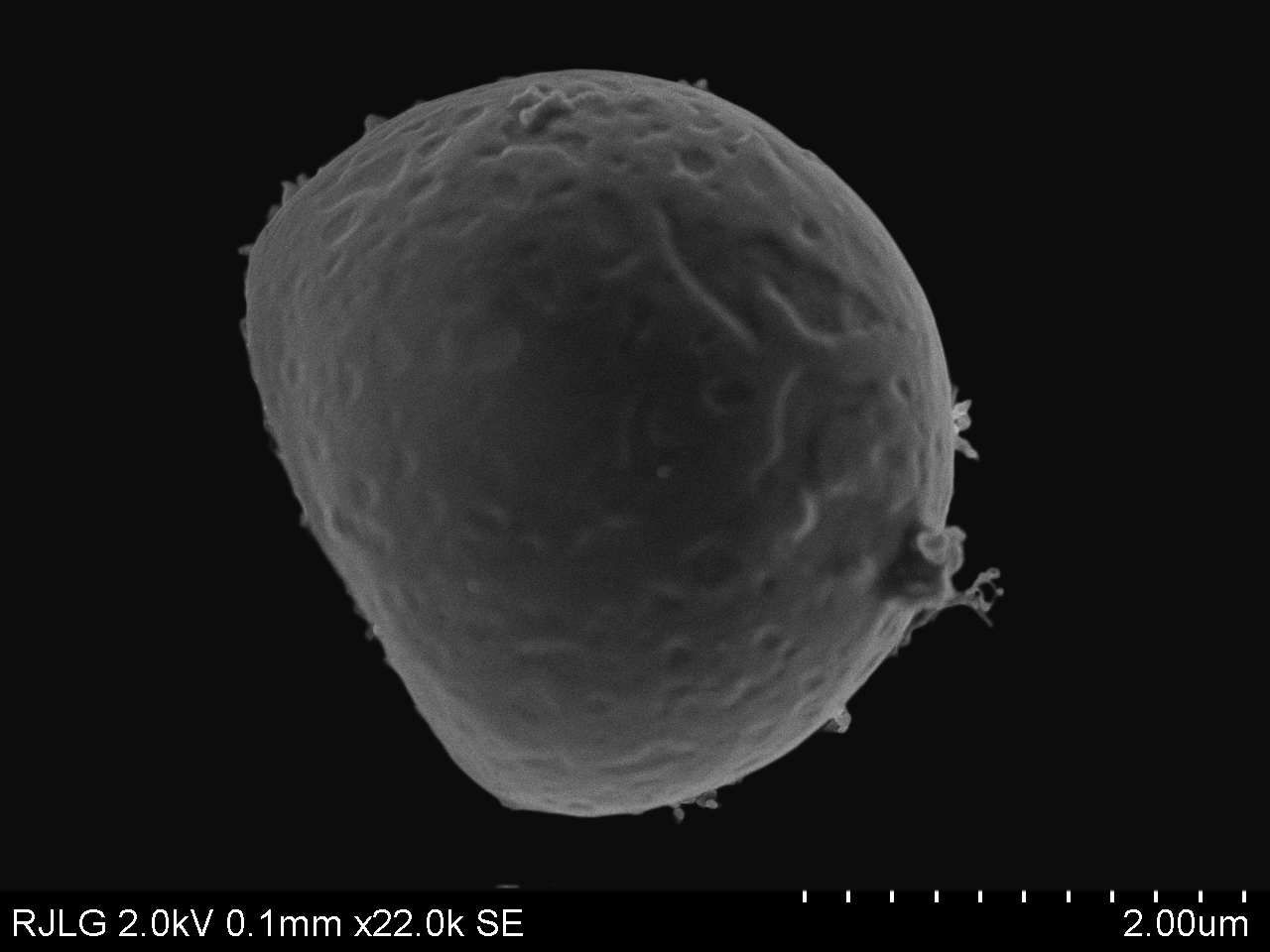 |
Particle 1
Fungi spore
Size = 3.3 µm
Composition: Major components: C, O; Minor components: S, Cl, Ca
Notes:
Hiliferous appendix on the lower right, smooth ornament.
|
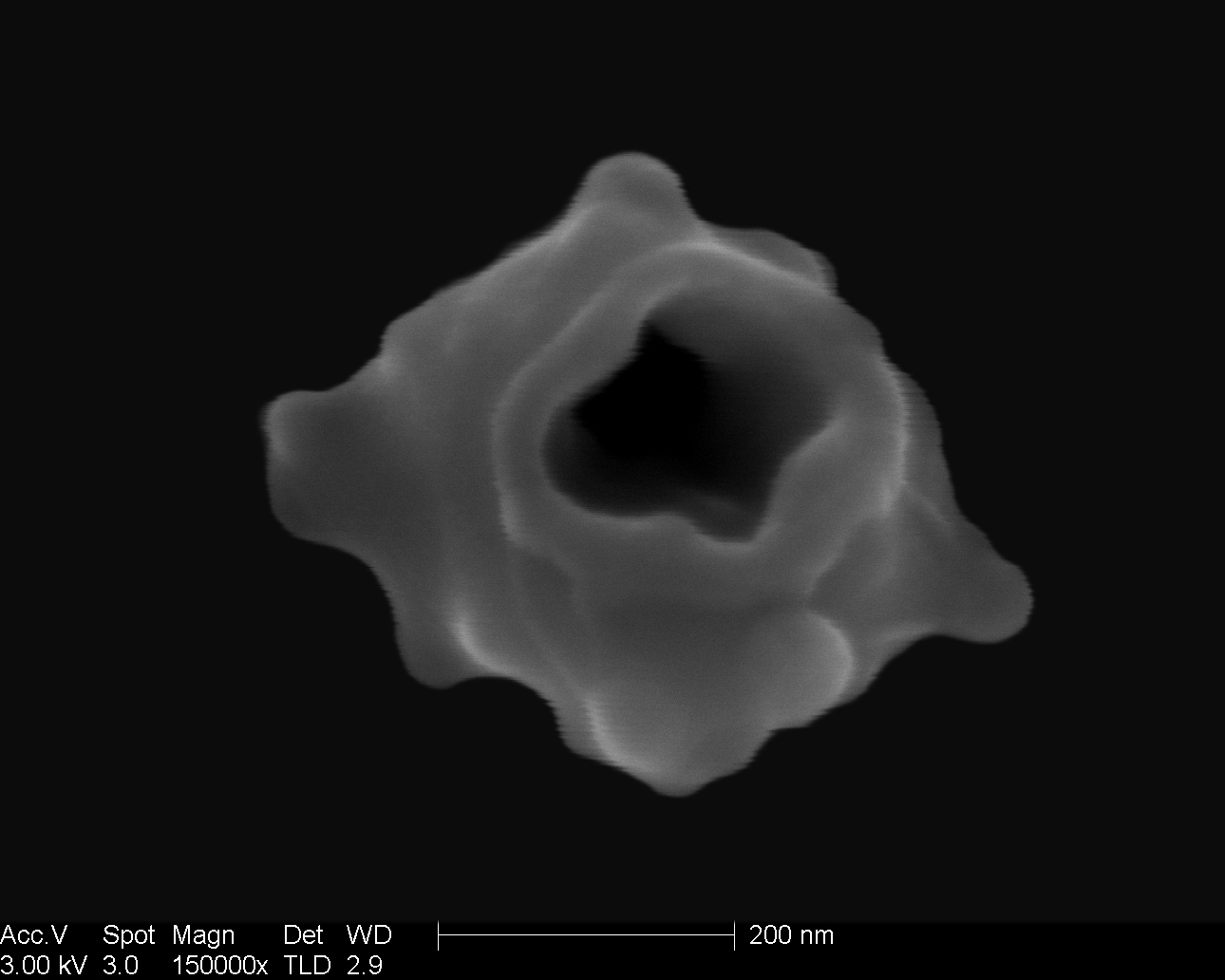 |
Particle 2
Non classified
Size = 410 nm
Composition: Major components: C, O; Minor components: S, Cl
Notes:
Morphology with circular aperture and ornament that reminds a fungi spore.
|
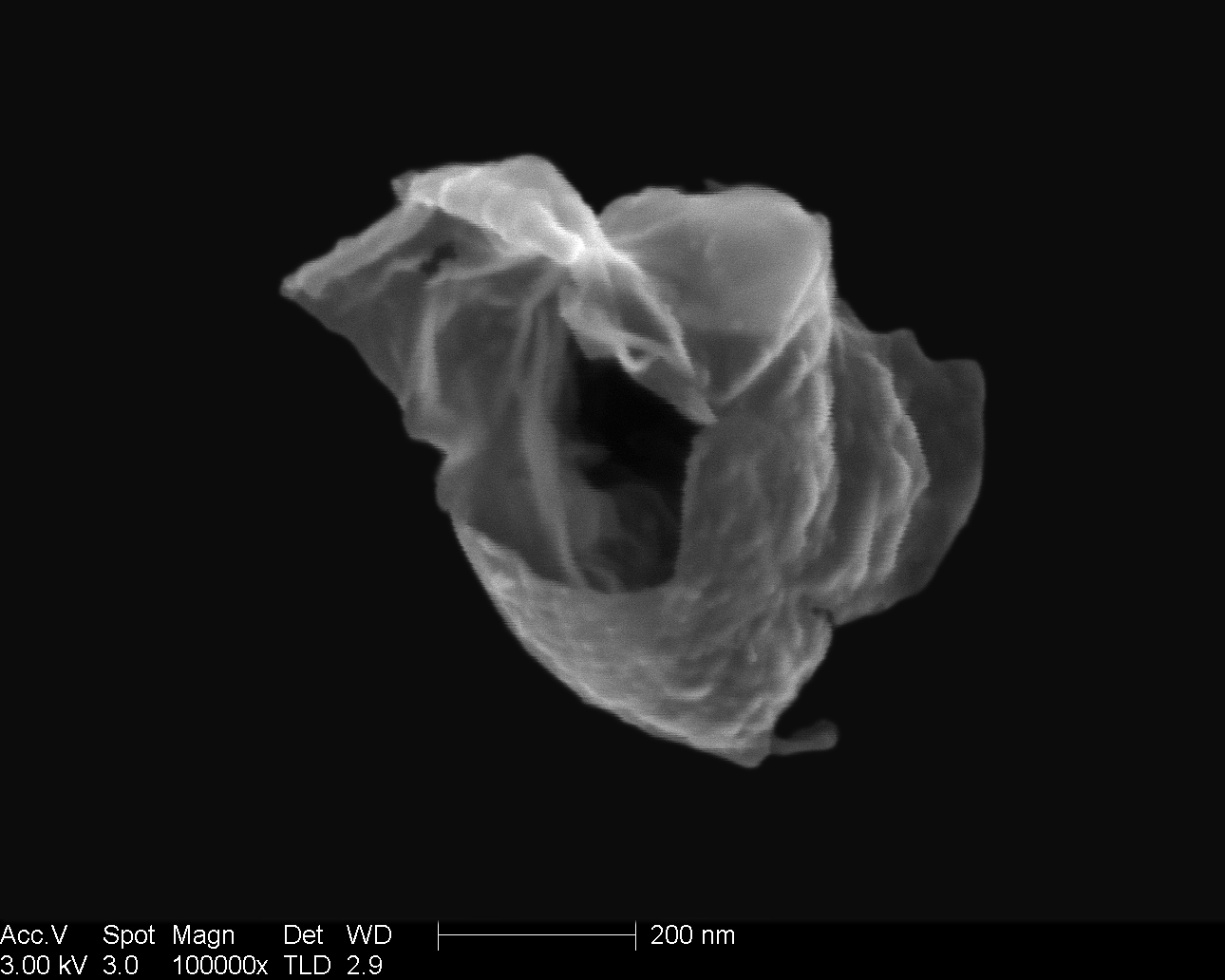 |
Particle 3
Vegetative detritus
Size = 590 nm
Composition: Major components: C, O; Minor components: Al, Si (not always)
Notes:
The morphology reminds a vegetative tissue in which some volatile material was initially entrapped (see the open cut).
|
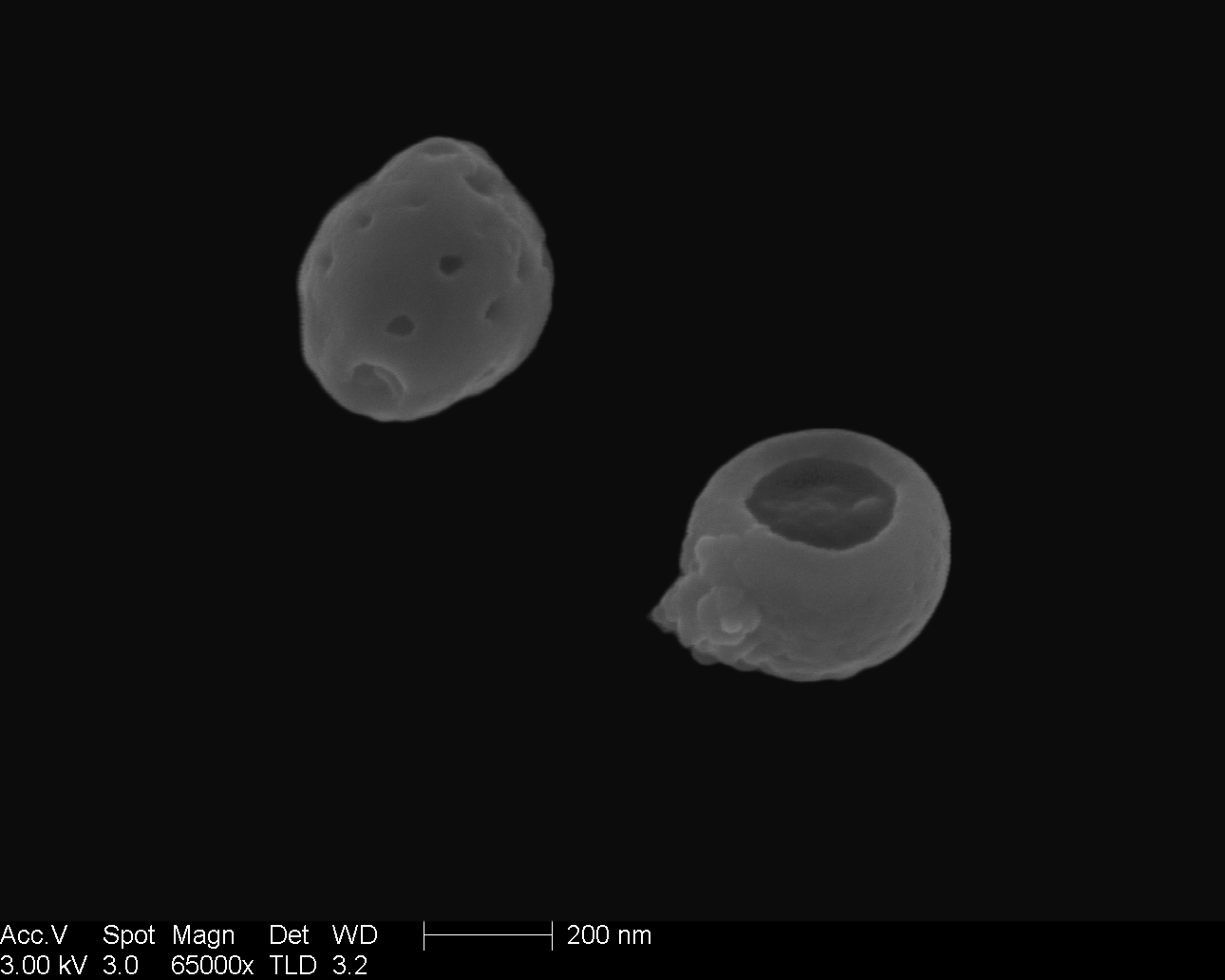 |
Particles 4 & 5
Fungi spores (possible)
Size = 420 nm
Composition: Major components: C, O; Minor components: S, Si, Cl, Na, K
Notes:
Different morphologies of possible fungi spores with similar size and elemental composition. The one on the lower right has golf ball texture and seems to have volatile contain. Both of them are very abundant in the samples and frequently found mixed with soot agglomerates.
|
Heavy Metal Oxides
Frequently found in the PM2.5 samples collected during traffic peak hours with sizes from 800 nm up to 5 µm. Some of them are frequently mixed with mineral particles. The most abundant are iron oxides (frequently linked to minor contents of titanium and zinc).
 |
Particle 6
Iron oxide
Size = 1.9 µm
Composition: Major components: Fe2O3; Minor components: Si, S, Ti, Mg, Cl, Na
Notes:
Agglomerate structure and associated minor elements typical from vehicle emissions.
|
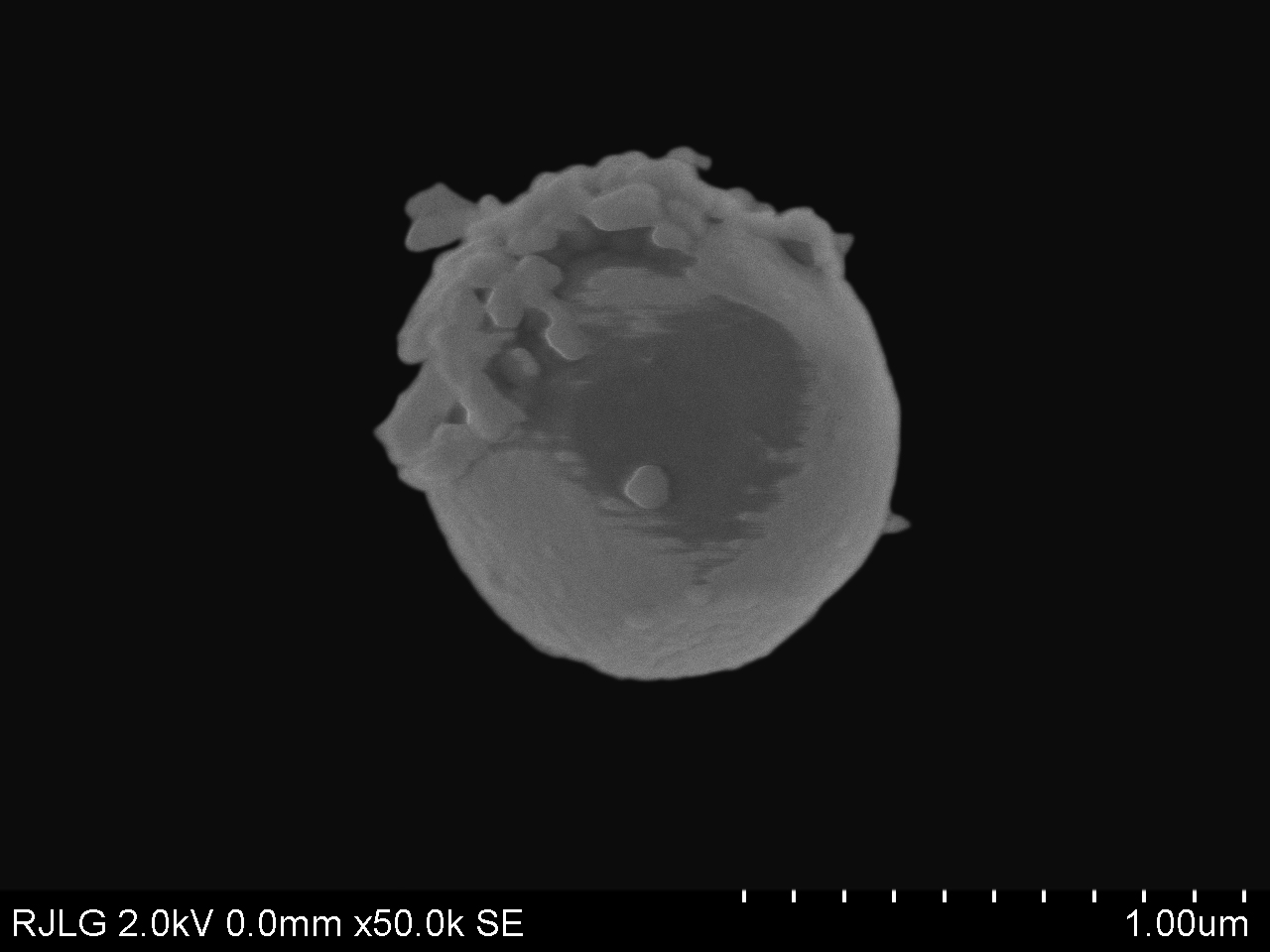 |
Particle 7
Iron-zinc oxide
Size = 1 µm
Composition: Fe2O4Zn; Minor components: Mn, Cr, Ca, Mg, S, Si, Al
Notes:
Spherical morphology frequently associated to industrial combustion processes.
|
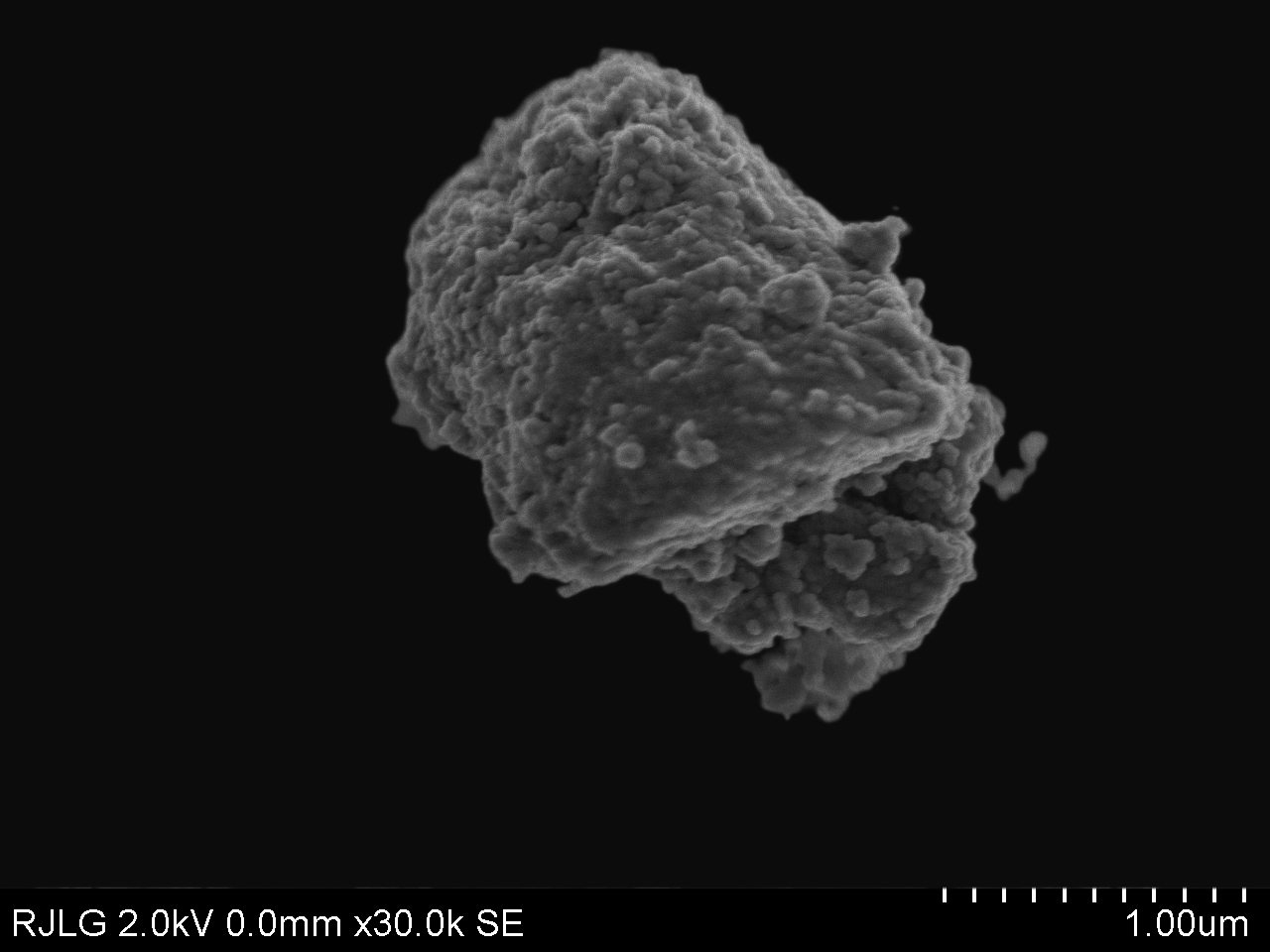 |
Particle 8
Iron oxide
Size = 3 µm
Composition: Fe2O3; Minor components: Si, S, Cu, Cl, Mg, Al, Ca
Notes:
Associated minor elements indicate possible anthropogenic origin.
|
Mineral Particles
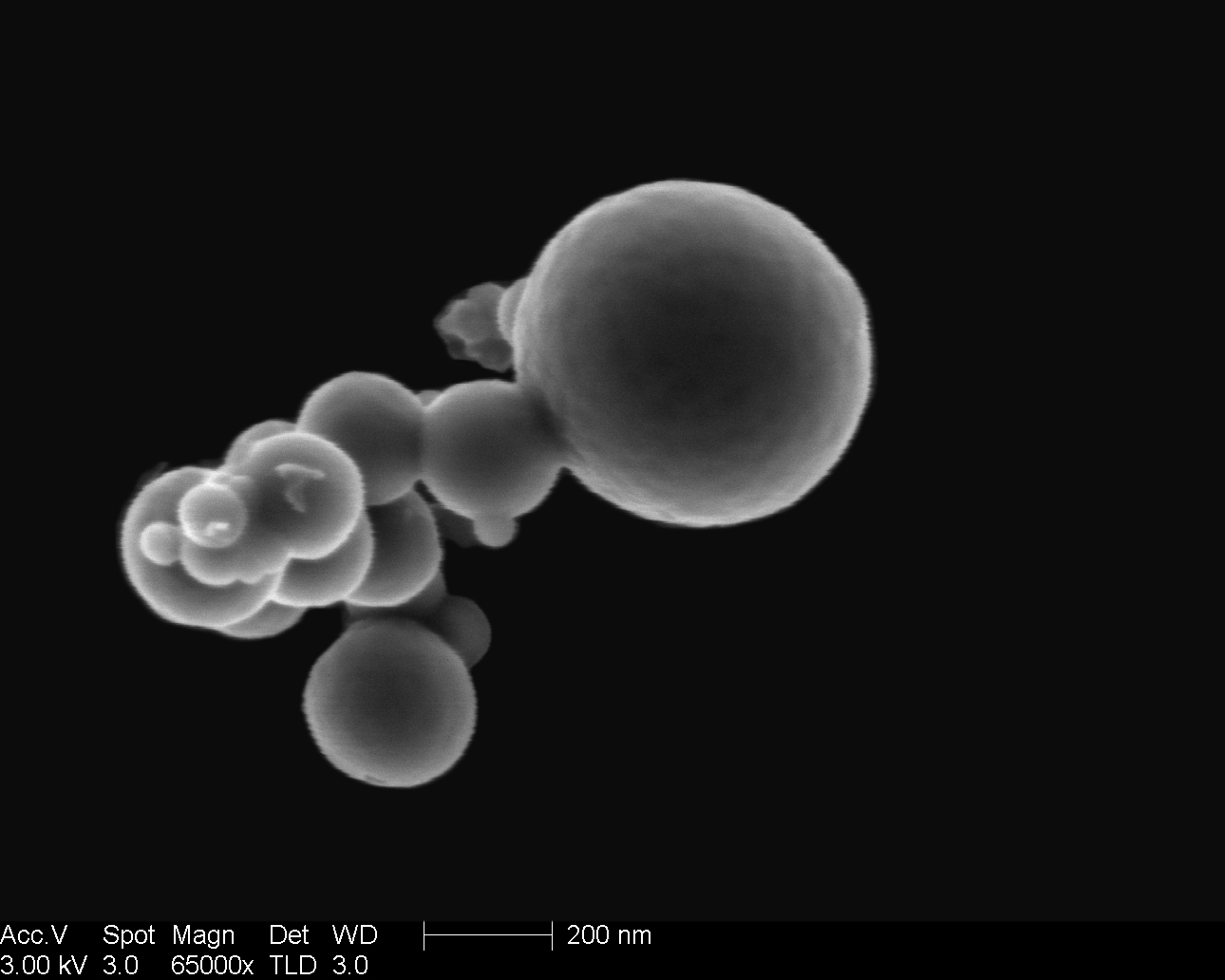 |
Particle 8
Spherical AluminoSilicate (SAS particle)
Size = 800 nm
Composition: SiO, Al2O3; Minor components: Ca, S, Na, Fe
Notes:
Spherical aluminosilicate related to coal fired power plant emissions. Also denoted as fly-ash.
Frequently found as single particles (not agglomerated) with a wide size range from several nanometers to several micrometers.
|
 |
Particle 9
Clacium carbonate (calcite)
Size = 1.6 µm
Composition: CaCO3
Notes:
Morphology with circular aperture and ornament that reminds a fungi spore.
|
 |
Particle 10
Spherical AluminoSilicate (SAS particle)
Size = 800 nm
Composition: Major components: SiO, Al2O3; Minor components: Ca, S, Na, Fe
Notes:
Spherical aluminosilicate related to coal fired power plant emissions. Also denoted as fly-ash.
Frequently found as single particles (not agglomerated) with a wide size range from several nanometers to several micrometers.
|
 |
Particle 11
Non classified
Size = 410 nm
Composition: Major components: C, O; Minor components: S, Cl
Notes:
Morphology with circular aperture and ornament that reminds a fungi spore.
|
Soot Agglomerates
Other Carbonaceous Particles
Externally Mixed
Images from the MSY site
Upcoming...







